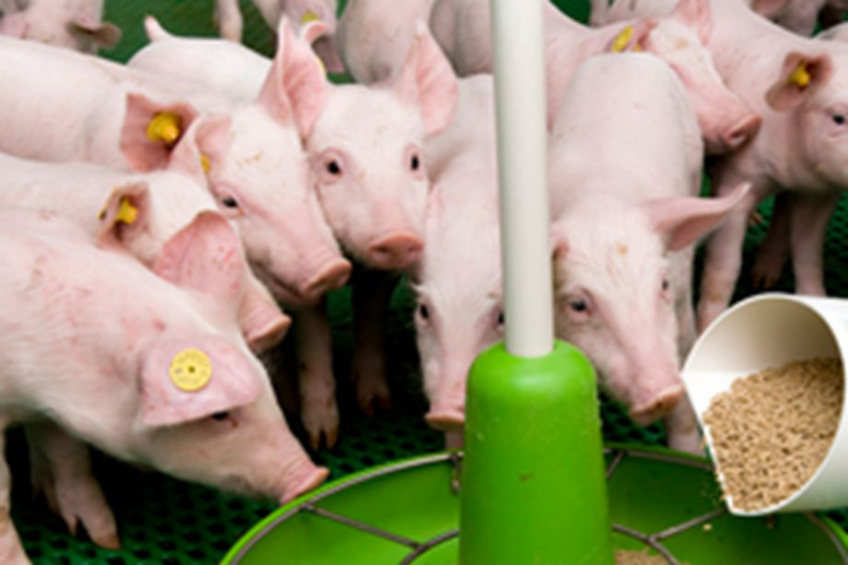SPC for piglets: Performance and immunity

In the search of finding suitable protein sources for weanling nutrition, soy protein concentrate may be a suitable ingredient. The component has reduced levels of anti-nutritional factors and high digestibility of amino acids.
Weaning is a critical moment in the life of a piglet. The stress generated when sow milk is substituted for less digestible plant proteins is one of the challenges faced by newborns.
Soybean meal, commonly used in pre-starter diets causes a transient hypersensitivity in the piglets gut due to the presence of glycinin and beta-conglycinin antigens soybean. Therefore, feed ingredients of animal origin such as lactose, protein plasma and fish meal are usually used in the formulations for newly weaned pigs, because these ingredients have good palatability and stimulate the immune system. However, feed ingredients of animal origin also have a high cost compared to vegetable proteins as soy protein concentrate (SPC).
Voluntary feed intake
Voluntary feed intake and aspects related to health and immunity are crucial for piglet performance because the immune and digestive systems are interconnected. The use of ingredients that may contribute to increased resilience against stress, diseases or infections are, therefore, needed.
Major consequences of excessive immunostimulation include production of pro-inflammatory cytokines IL-1β, IL-6, TNFa and IFNa / β, activation of acute-phase responses, fever, loss of appetite, reabsorption of muscle amino acids, nutrient redirection and acute phase protein production in the liver and anabolic stimulation of leptin production.
Soy protein concentrate in weanling pig nutrition
Soy protein concentrate may be a promising ingredient in weanling pig nutrition due to the reduced levels of anti-nutritional factors and high digestibility of amino acids.
An experiment conducted at University of Illinois studied the effects of inclusion of soy protein concentrate in piglet diets. Soy protein concentrate replaced blood plasma, soybean meal and fish meal in the pre-starter phase, and effects of soy protein concentrate on growth performance and blood parameters were evaluated.
A total of 160 pigs (initial body weight of on average 7.06 kg) were submitted to 4 dietary treatments for 4 weeks. A 2-phase feeding programme was used, with weeks 1 and 2 as phase 1 and week 3 and 4 as phase 2.
Performance of piglets in phases 1 and 2
Pigs were fed one of 4 diets during phase 1, whereas all pigs were fed a common diet in phase 2. The same sources of soybean meal, fish meal, plasma and a micronised soy protein concentrate (X-Soy 200, Selecta) were used in all diets (see Table 1).
On the last day of the experiment, blood samples were collected for analysis of tumour necrosis factor-α (TNF-α), IgG and peptide YY (PYY). Data was analysed by ANOVA, in a randomised complete design with the pig as the experimental unit. Statistical significance was considered at P<0.05.>
Pigs fed diets containing 8% SPC replacing plasma, 5.25% of SPC, replacing fishmeal or 13.25% SPC replacing plasma and fish meal had no differences in growth performance compared with pigs fed the control diet. Likewise, the substitution of plasma and fish meal by soy protein concentrate in diets during phase 1 had no effect on growth performance during phase 2 and the overall phase (Table 2a-c).
In addition, depending on the local feed prices, a soy protein concentrate diet can result in more cost-effective nutritional programmes for piglets.
Blood parameters
Tumour necrosis factor-α, immunoglobulins and peptide YY are indicatives of inflammatory response and immunity. The concentrations of TNF-α, PYY and IgG were not affected by the diets (see also Figure 1).
The results of this experiment indicate that soy protein concentrate may replace completely either blood plasma, fishmeal, or both blood plasma and fish meal in diets fed to weanling pigs without affecting growth performance or indicators for proinflammatory immune parameters of pigs.
Thus, it appears that diets based on soybean meal and soy protein concentrate may be used during the initial 2 weeks post-weaning and there is no need of animal proteins during this period if X-Soy 200 is included in the diet.
For additional information, please contact x-soy@selecta.com.br. Selecta wishes to thank the University of Illinois for their assistance with this experiment.











